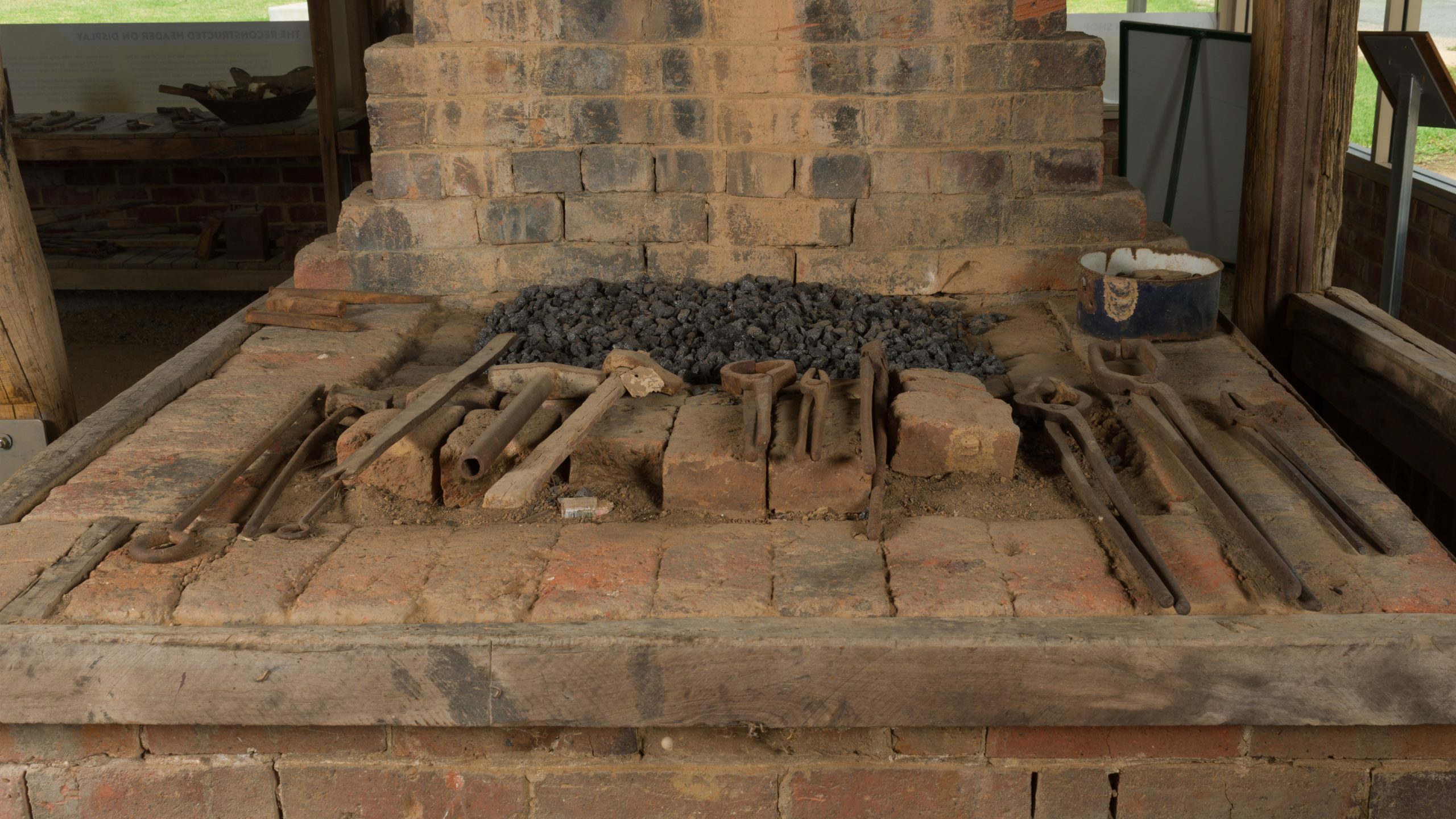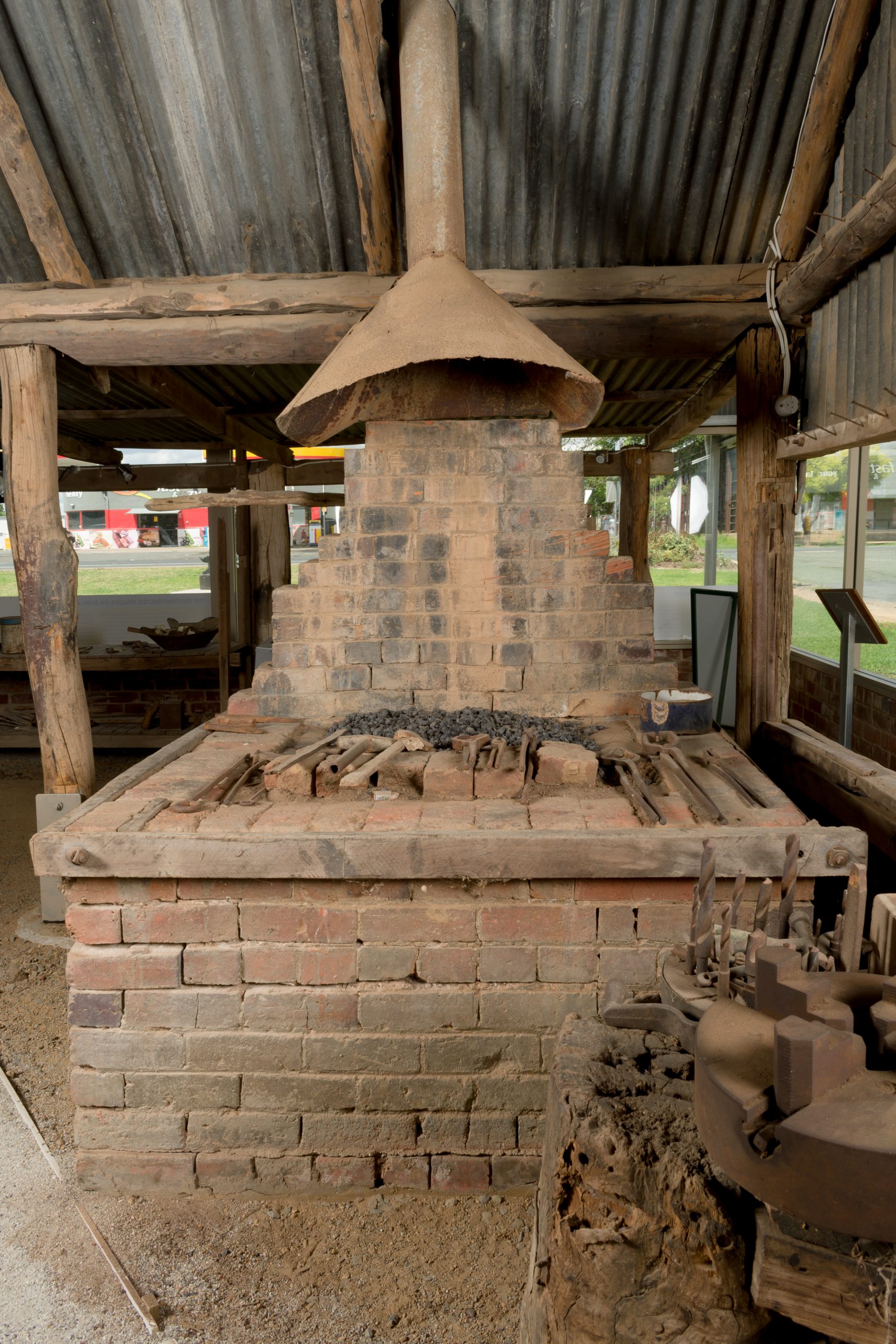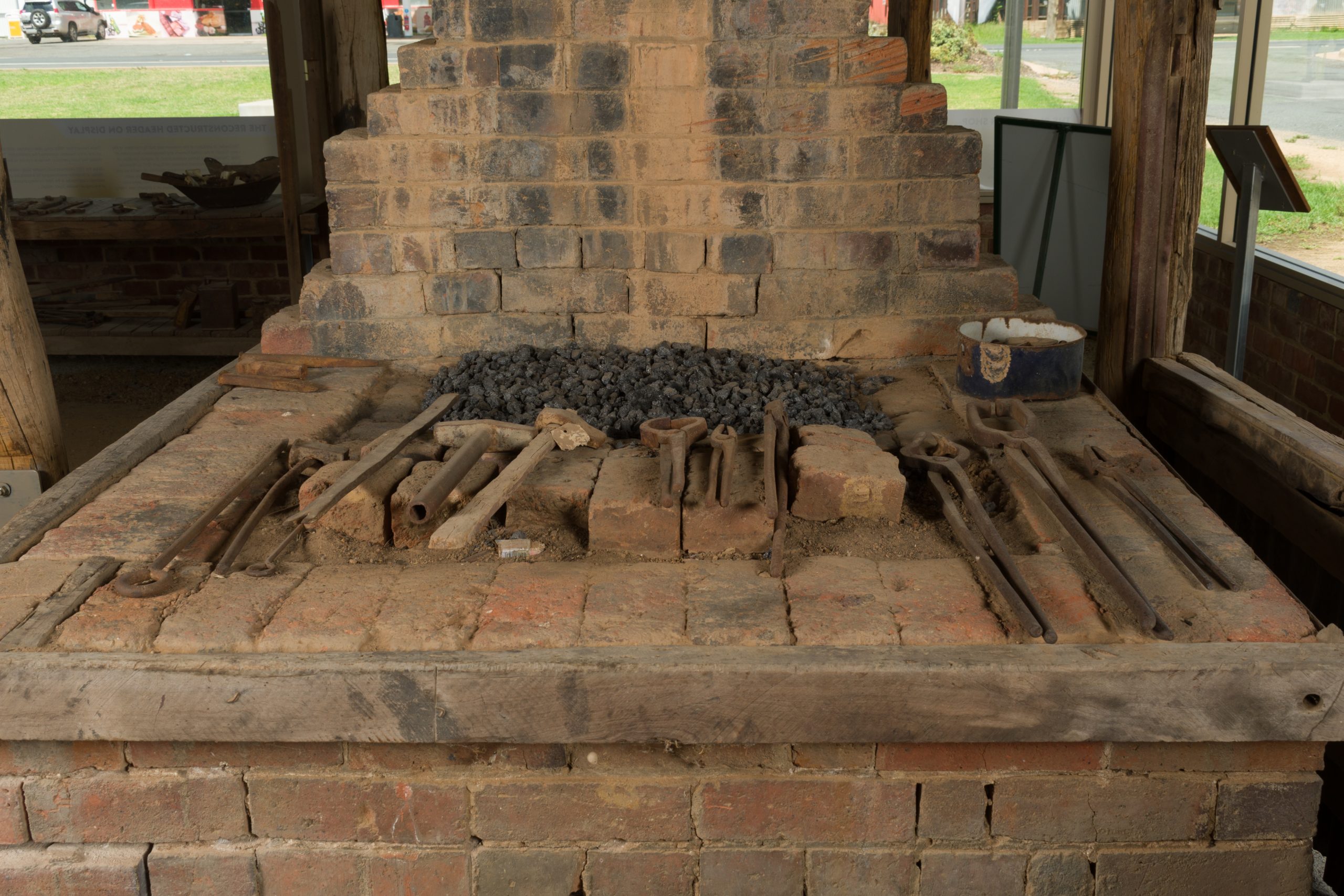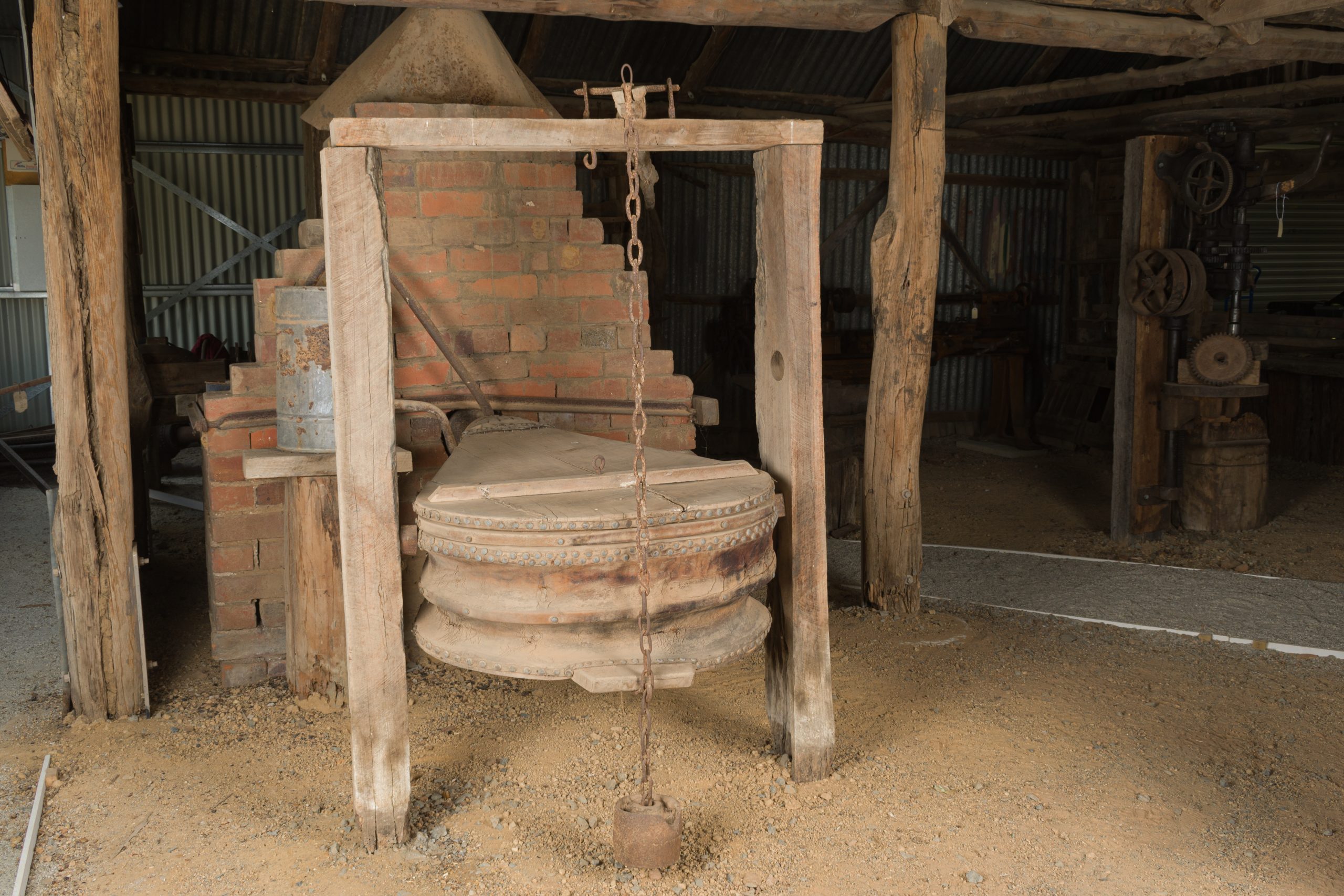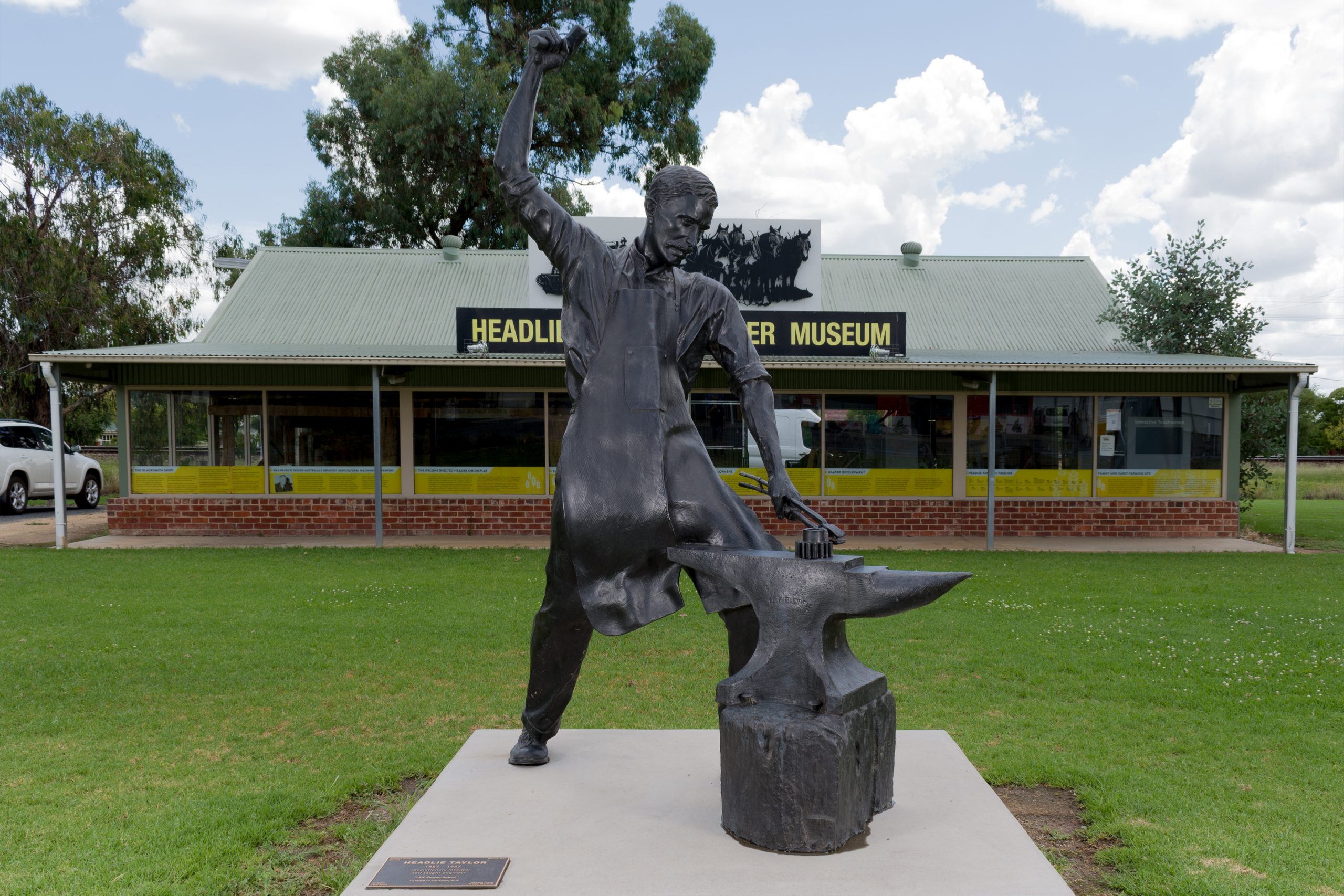Burning Ambition
The Heart of Headlie Taylor’s Workshop
Two parts reliant on each other, the forge and bellows were the fire-breathing heart of Headlie Taylor’s (1883-1957) blacksmith workshop. To heat metal to the point it became malleable enough to shape, Taylor would have heated this forge to temperatures greater than 1100°C with the help of the bellows.
With each pump of the bellows, air was forced into the forge to feed the flames and energise the coals. Taylor would have assessed the colour of the coals to determine the temperature. For instance, grey coals meant approximately 200°C to 250°C while red glowing coals (that are perfect for toasting marshmallows) indicated around 480°C. When the forge emitted a bright yellow glow, he could get to work.
The simple brick wall between the two parts protected the bellows from the heat while supporting the sheet metal flue chimney. It is believed that Headlie Taylor installed the chimney when he expanded the forge around 1911, also installing the bellows with a water-cooled nozzle (the tuyere).
While these bellows are not the original set, they are of a similar age to what would have been used on the original Emerald Hill farm. In saying that, the coal and ash in the forge are original, having been carefully collected when the workshop was dismantled and relocated to form the Headlie Taylor Header Museum.
Just as his forge needed bellows, Taylor needed help to do his best work. He often enlisted the help of his sisters, Gladys and Ruby, to operate the bellows as he worked alongside the forge. Without the support and labour of his family, he may not have been able to forge his successful career in agricultural engineering – a brilliant spark unable to ignite.


